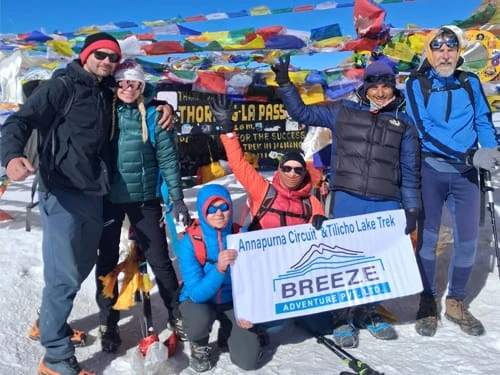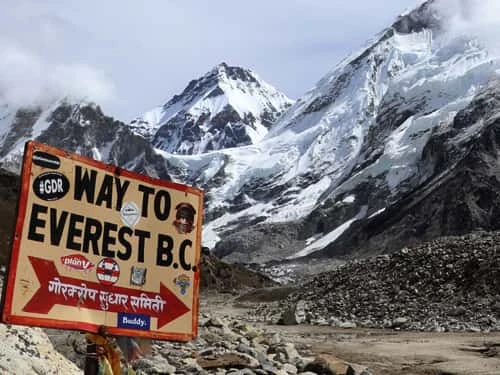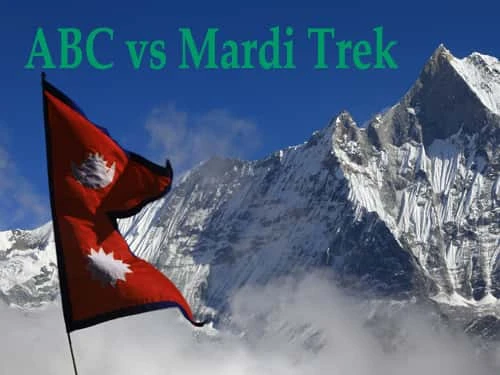What was the biggest disaster on Everest?
Mount Everest, the highest peak in the world, stands tall at 8848.86 meters above sea level. At such a height, the oxygen level is obviously low, causing difficulty at the summit. Every year, thousands of people take a permit to climb this mountain, but some of them meet misfortune. Over the last 100 years, more than 340 people have lost their lives, with many others being injured.
Talking about the biggest disaster on Everest till now, the 1996 Everest disaster is the one that thrills the history. May 10 and 11 of 1996 remained as the merciful days that caused the highest peak of sadness for quite a long time. This disaster happened as a natural event, which, of course, was not in anyone’s hands.
A blizzard and sudden change in weather took away the lives of 8 trekkers. The same year, 12 people died on Everest mercilessly. A few years back, the 2015 Earthquake in Nepal also caused major destruction at Everest Base Camp, but that of 1996 is the major one in history. The disaster is still a big threat that every Everest lover must have an idea of.
What really happened on Everest in 1996?
In 1996, four expedition groups attempted to climb Mt. Everest. The group had an adventure consultant led by Rob Hall (Clarke) who had previously ascended this peak four times. Also, the group had the Mountain Madness team led by Scott Fischer (Gyllenhaal).
During that season, 84 climbers were summiting the highest peak. As many trekkers of Adventure Consultant and Mountain Madness summited the mountain, they were on their descent journey. It was around 6 pm on 10th May, they suddenly faced a change in weather.
A storm in South Col caused a blizzard over the area, which ultimately took away the lives of 8 climbers. Many others remained covered under snow and were missing until later. The rest were injured heavily, but the 8 people who died made it the most unforgettable event in Everest's history.
As per the reports, the weather was clear only at midnight, allowing some climbers to seek help in Camp IV. This deadly snowstorm was unpredictable, with no prior preparations at that time.
Who was to blame for the 1996 Mt. Everest disaster?
People often ask who was to blame for the 1996 Mt.Everest Disaster, but the answer will be unfair if we pinpoint a single culprit in this case. Well, natural calamities are meant to happen suddenly; it’s not in anyone’s hands. The only thing that are under our control is precaution measure and prevention. Still, several factors seem responsible for this tragic event.
Ineffective leadership can be the major cause of this disaster. Expedition leaders from various groups were reportedly in a rivalry. They didn’t have coordination or communication. They put forward their personal egos even in such critical altitude and weather.
Logistic Problems were also a major culprit. Bottlenecks at Balcony and Hillary Steps had an issue with a number of climbers and were delayed in fixing ropes. This caused a delay in the journey, and the trekkers had to face the storm.
Oxygen deprivation and physical limits are also considered important factors for this tragic loss. At such a high altitude, the oxygen is low, causing altitude sickness. Oxygen was not sufficient, and many climbers with weak physical capacity lost their lives.
Unforgiving condition is another 1996 Everest Disaster cause. No one had expected such an unpredictable change in the weather. The snowstorm, high winds, and rapidly worsening blizzard created an extremely dangerous situation for climbers. It made the trekkers unable to descend, escaping unforgiving terrain.
Besides the natural factors, the lack of communication and coordination amongst the expediting groups appeared as a major culprit. Though the event was the darkest part of history on Everest, what lesson it carries is unity in strength. With good communication and unity, you can conquer everything.
1996 Mount Everest Disaster Map
The 1996 Everest disaster map shows the place where this tragic event happened in the past. The map includes important spots like Everest Base Camp, Camp I to IV, and the summit. Most climbers followed the South East Ridge Route at that time.
Actually, the disaster happened near the summit and the South Col. This is the exact location where a strong storm hit the area, and the climbers were stuck. The event eventually created 8 deaths, with many injured and threatened.
1996 Everest Disaster Movie
The 1996 Everest Disaster movie has been the subject of several popular movies and documentaries. Since it is based on a real-life event that took many lives, both mountain trekkers and adventure lovers show keen on this matter. Even nature lovers and movie buffs find it interesting. You can easily find movies, TV movies, documentaries, and IMAX films based on the Everest Disaster.
Everest (2015): It is a feature film with star casts like Jake Gyllenhaal, Josh Brolin, and Jason Clarke. It is a dramatic adaptation of the 1996 tragedy that focuses mainly on events that led to the disaster and the consequences. You can also watch this movie on Netflix.
Ramnants of Everest: The 1996 Tragedy (2007): This is a documentary directed by David Breashears that explains the disaster and its impact.
Into Thin Air: Death on Everest (1997): This is a TV Film based on Jon Krakauer’s book, Into Thin Air: A Personal Account of Mount Everest Disaster. It was broadcast on ABC.
Everest (1998): It is an IMAX Film released in 1998. Actually, it documents the disaster and the involvement of the rescue team.
Seconds from Disaster- Into the Death Zone (2012): This is a TV Documentary, a part of the series called Seconds from Disaster. It also explores the 1996 Everest Disaster.
1996 Everest Disaster Books
Many books have been published showcasing the 1996 Everest Disaster. The books tried their best to explore the event, cause, victims, bodies, and more. These books have been appreciated by a huge audience. Here are a few of them, have a look:
- Into Thin Air by Jon Krakauer
- Climbing High by Lemme Gammelgaard
- After the Wind by Lou Kasischke
- Left for Dead by Beck Weathers
- The Next Everest by Jim Davidson
- The Other Side of Everest by Matt Dickinson
1996 Everest Disaster Victims
The 1996 Mount Everest Disaster Victims are obviously everyone who was present there at the moment. All 84 climbers were victims, with 8 of them dying and the rest suffering for their lives. The expedition leaders, guides, porters, and clients remained victims. Not just them, their family, close friends, as well as the trekking operators, were victims. Among them, 8 people who lost their lives struggling with the deadliest wind, left everyone speechless.
Some dead bodies were left on the mountain due to the high altitude and the challenge of finding out. While other bodies were either cremated or given to their families. Even today, the event is considered a dark history of Everest and is considered a black day. Every year, prayers are said for the dead.
1996 Everest Disaster Bodies
Talking about the 1996 Everest Disaster Bodies, 8 people died mercilessly. They struggled with a blizzard for many hours and left the world. They were citizens of various countries.
Andrew Harold Harris: He was a guide from New Zealand. His death was assumed due to falling while descending near the summit.
Dough Hansen: He was an Everest Summit Client from the United States of America. He died near South Summit at an altitude of 8749 meters. The reason for his death was reported to be exposure to the blizzard.
Rob Hall: Hall was a guide or expedition leader at Adventure Consultants. He was from New Zealand and died near South Summit at 8749 meters.
Yasuko Namba: Namba was an Everest Summit Client from Japan who died in the South Col. C in 7900 meters.
Scott Fischer: He was a guide or Expedition Leader from Mountain Madness. He dies on Southeast Ridge at 8300 meters. The reason for death was exposure to snow devastation.
Subedar Tsewang Smanla: He was an Indo-Tibetan Border Police officer from India. He died at Northeast Ridge at 8600 meters. He also died from exposure to disaster.
Lance Naik Dorje Morup: He was also an Indo-Tibetan Border Police from India and died at the Northeast Ridge.
Head Constable Tsewang Paljor: The Head Constable from India, Tsewang Paljor, also died from exposure to a blizzard.
1996 Everest Disaster Beck Weathers
Beck Weathers is an American Pathologist popular as a survivor of the 1996 Everest Disaster. Do you know that Weathers was presumed to be dead at 26000 feet altitude. But he was found alive after 15 hours in hypothermic coma. Though he survived the disaster, life after that wasn’t easy for him.
Born in 1946 in Texas, United States, he is currently leading a normal life with his wife, Peach, and children. But the Everest incident snatched his right hand. Not just that, he was frostbitten very badly, and even his fingers on his left hand were missing. His nose was also badly affected by the snow. He was rescued by a helicopter, which was the highest effort of that time.
The doctor’s effort and his wife’s unconditional love were supposed to be his strength for the new life. He almost died in a snowstorm. After his treatment, he went back to his work as a pathologist.
Many books, documentaries, and platforms covered his story as the most inspiring and dreadful. His journey to beat death in the snow is both a symbol of bravery and fortune. You can have a detailed briefing of this man in Jon Krakauer’s book, Into Thin Air.
Also, Beck Weathers has an autobiography named Left for Dead: My Journey Home from Everest.
1996 Everest Disaster Survivors
You must be thinking about the 1996 Everest Disaster Survivors, where are they now. After such a tragic incident, many of them suffered from bad health issues. While most of them had the worst mental disturbance. What they went through on Everest was not easy to forget. After rescue from that deadliest blizzard, they shared their experiences on various platforms.
Michael Groom: He was a guide at Adventure Consultants. He survived the blizzard and later shared his Everest Trekking experience on various platforms.
Anatoli Boukreev: He is a Russian-born climber and guide. He was praised for his heroic effort to rescue others during the Everest disaster. Mainly, he assisted in the rescue of American Pathologist, Beck Weathers.
Charlotte Fox: Fox is an American mountaineer who was a part of Scott Fischer’s Mountain Madness. She bravely fought the storm and survived that misfortune.
Neal Beidleman: He is an American mountaineer who also played a key role in rescue activities on Everest. He summited the mountain and later helped in the rescue of Beck Weathers.
Lene Gammelagard: Lene is a Danish author, climber, and motivational speaker. She summited the highest peak and survived the disaster.
Sandy Hill: Sandy Hill is the 34th woman to reach the summit. She is an American mountaineer who survived the 1996 Everest Disaster.
Jon Krakauer: Krakauer is an American writer and mountaineer. He was in the team of an expedition led by Rob Hall. He successfully summited the peak and returned to the camp, surviving the blizzard. Later, he shared his experience on various platforms. Some of his famous books are Into the Wild, Into Thin Air, Under the Banner of Heaven, After the Fall, and more.
Well, the Everest Disaster of 1996 is an unforgettable moment in Everest's history. It is a dramatic journey covering surprise, thrill, effort, bravery, and tragedy. May 10 and May 11 remain as the dark days, but they carry a strong lesson of coordination and preparation.
Unity and well well-planned tour can be powerful weapons to deal with any adventure. So, whenever you think about the Mount Everest summit, Everest Base Camp trekking, or any other peak, just remember this incident. You will boost your physical strength as well as make good plans.
.webp)



